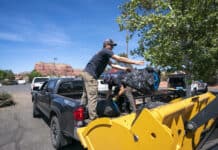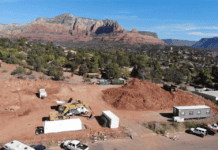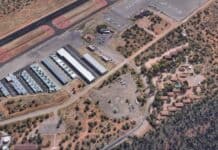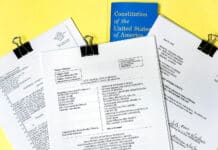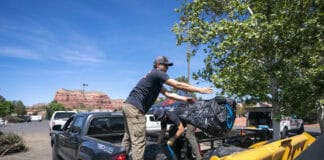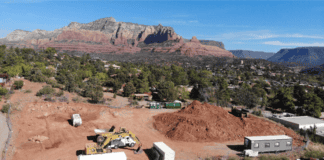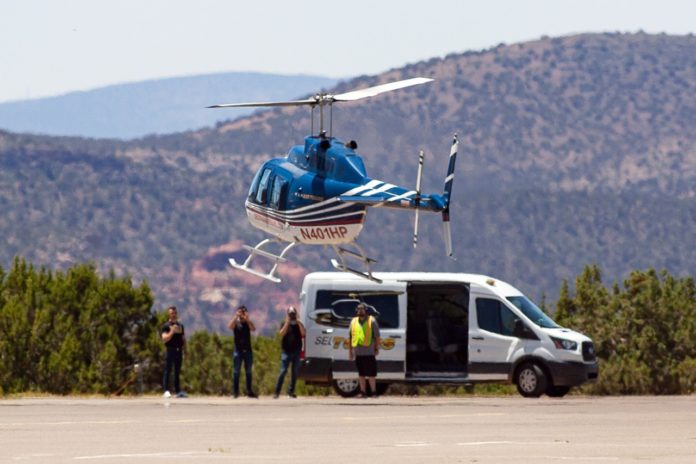
Who is the highest paid employee at the Sedona Airport?
Technically, it’s the airport’s general manager, who has 40 years experience in airport operations. But since the Sedona-Oak Creek Airport Authority currently pays more in legal fees than it does in employee wages and benefits, the person most-compensated by the airport could be someone in the office of Tony S. Cullum in Flagstaff, the airport’s attorney.
In 2020, the Sedona Airport reported spending $982,000 in legal fees. The same year, the airport’s entire staff, including its administrative team, ground crew and customer service members, were paid $712,000 — $270,000 less than the airport’s lawyers.
Last year’s legal bill was particularly large, but the previous years were also costly. In 2019, the airport spent $762,000 in legal fees. In 2018, $685,000, and in 2017, $705,000, for a total of $3.1 million since 2017, when the airport’s legal fees began increasing dramatically, from $65,000 in 2016.
For $3.1 million, the airport could have bought a new BMW and droven it off the edge of the mesa — Thelma and Louise-style — once a month during the same period of time.
The airport is spending the lion’s share of its legal fees on what has become a multi-year scorched earth war with a helicopter tour operator, Dakota Territory Tours, which does business as Sedona Air Tours. Sedona Air Tours is the longest-running of two helicopter tour operators in Sedona, and the most busy, based on commercial fees it paid to the airport until 2019, when the company stopped paying the fee after a court ruled the fee violated the Anti-Head Tax Act.
The airport uses legal counsel for many different needs, such as reviewing and crafting the language in contracts, but frequent comments by staff in board meetings attributing budget overrides to the Dakota lawsuit suggests the airport’s lawyers are spending most of their time on this case. The airport would not confirm what share of its legal spending is due to the fight with Dakota.
The dispute has a negative impact on the parties directly involved, as well as Sedona and the public at large, who financed Sedona Airport projects through FAA and ADOT grants to the tune of $2.4 million in 2020.
In 2020, the manager of the FAA’s Phoenix Airports District Office made a preliminary determination that Sedona Airport’s legal spending did not violate FAA rules for federally-assisted airports. The FAA looked at the matter following a complaint filed by Dakota.
A ‘Holy War’
Dakota and the airport have had disputes of varying sizes going back two decades, but a 2017 Request for Proposals led to the recent gushing of legal expenses. That year, the airport and Dakota settled a dispute over lease terms by mutually agreeing to a competitive Request for Proposals process to select a helicopter tour operator for the airport. Two companies submitted bids and the airport selected the other company.
The airport moved to evict Sedona Air Tours from the airport, but Sedona Air Tours received a pause in the eviction while Dakota contested the RFP decision and the court ruled on numerous side issues.
Over four years, the two sides have gone back and forth in court, each pinning their hopes on one future hearing after another, hoping that one or another minor victory would end the case. All the while, Dakota has continued doing business at the airport.
A decisive ruling has not occurred yet, and there appears to be no clearer end in sight now than two years ago. The lawyers for both sides have told their respective clients that they have a good case against the other party. Both sides frame their efforts as a just defense against unfair attacks from an unscrupulous opponent.
Eric Brunner, CEO of Sedona Air Tours, wouldn’t say how much he has spent on legal fees. On multiple occasions he has called the airport fight a “holy war,” since he considers the stress of disputes with the airport a contributing factor in the death of his father Larry Brunner, who was also a partner in Sedona Air Tours.
Yavapai County and the airport’s insurer, which would be on the hook for damages owed to Dakota if the airport ultimately lost, supports the airport continuing to fight rather than settle. The county owns the airport and has some oversight powers over Sedona-Oak Creek Airport Authority. In the past, the County has shown a willingness to check the SOCAA, but it backs the airport’s expenditures in the current legal battle.
War Affects Public
Besides the direct expenditure of dollars, the legal war is impacting the airport in less obvious ways. In board meetings over the past two years, airport board members and staff have cited the unresolved litigation as a barrier to shopping for insurance coverage and obtaining funding for critical infrastructure projects needed to enhance safety and move forward with development.
Two urgent projects include replacing an old and undersized fuel farm and increasing water capacity on the mesa. The airport’s legal fees have drained capital that could have been used as down payments or matching funds for grants for these projects.
The Sedona area has a stake in increasing water capacity on the mesa because it would help fortify the region against wildfire risk, which is growing due to climate change. More robust fire supression at the airport would protect the community from fires originating on the mesa.
Also, firefighters use the airport as a base for firefighting aircraft attacking fires in the wider region, as they did during the Rafael Fire. Firefighters could refill tankers with water on the mesa more efficiently with higher rates of flow and storage.
The strain on finances may be delaying spending on less critical, but maybe more visible projects, such as enhancements to the Airport Overlook parking area. This parking lot provides parking, for $3 a car, for the popular Overlook, as well as overflow parking for the Airport vortex and Airport Loop Trail, which are part of Coconino National Forest. The Overlook parking lot has brought in $547,000 for the airport in the past two years, but improvements to the lot have been minimal so far.
At a June board meeting, a parking attendant at the Overlook asked the board about future improvements.
“When are we going to see improvements to the parking area,” he said. “We’ve been generating a lot of revenue.”


